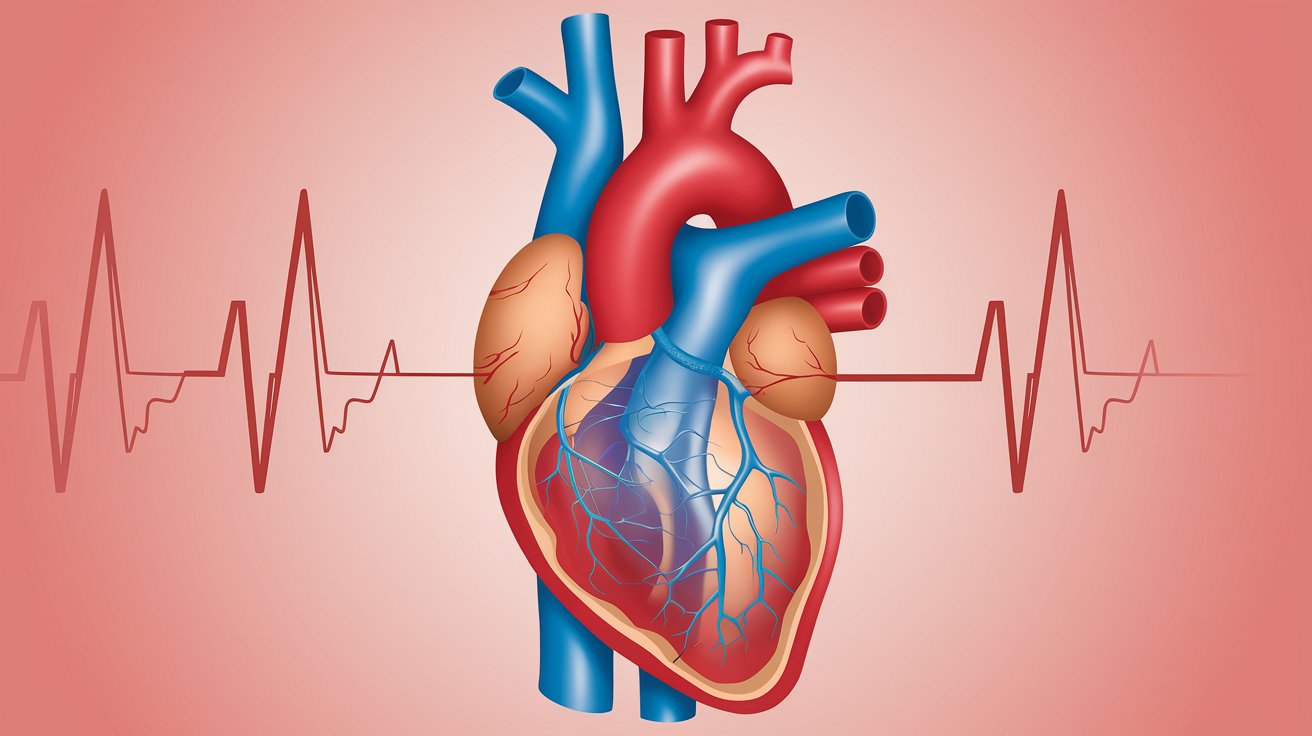
What is a congenital cardiovascular shunt? A congenital cardiovascular shunt is a heart defect present at birth that causes blood to flow abnormally between the heart's chambers or blood vessels. This condition can lead to serious health issues if not treated properly. Why does this happen? It occurs when there's an abnormal connection, like a hole, between the heart's chambers or major blood vessels. How common is it? These defects are among the most common types of birth defects, affecting nearly 1 in 100 newborns. Can it be fixed? Many shunts can be corrected with surgery or other medical treatments, allowing individuals to lead healthy lives. Why should you care? Understanding congenital cardiovascular shunts can help in early detection and treatment, improving outcomes for those affected.
Key Takeaways:
- Congenital cardiovascular shunts are abnormal connections in the heart or blood vessels present at birth, affecting nearly 1% of live births. Early detection and treatment significantly improve the prognosis for affected children.
- Genetic and environmental factors, family history, and maternal age can contribute to the development of congenital heart defects. Prenatal screening and genetic counseling play crucial roles in early intervention and understanding the risk.
What is a Congenital Cardiovascular Shunt?
Congenital cardiovascular shunts are abnormal connections between blood vessels or heart chambers present at birth. These shunts can cause blood to flow in unusual patterns, leading to various health issues. Here are some intriguing facts about these conditions.
-
Congenital cardiovascular shunts can be classified into two main types: left-to-right and right-to-left shunts. Left-to-right shunts are more common and usually less severe.
-
Ventricular septal defect (VSD) is the most common type of congenital heart defect, accounting for about 20% of all cases. It involves a hole in the wall separating the heart's lower chambers.
-
Atrial septal defect (ASD) is another common type, where a hole exists between the heart's upper chambers. This defect can lead to increased blood flow to the lungs.
-
Patent ductus arteriosus (PDA) occurs when a blood vessel called the ductus arteriosus fails to close after birth. This vessel is crucial for fetal circulation but should close soon after birth.
-
Tetralogy of Fallot is a complex congenital heart defect involving four different heart abnormalities. It often requires surgical intervention early in life.
Causes and Risk Factors
Understanding the causes and risk factors can help in early detection and management of congenital cardiovascular shunts.
-
Genetic factors play a significant role in the development of congenital heart defects. Certain genetic syndromes, like Down syndrome, increase the risk.
-
Environmental factors during pregnancy, such as maternal diabetes, alcohol consumption, and certain medications, can contribute to the development of these defects.
-
Family history of congenital heart defects increases the likelihood of a child being born with a similar condition.
-
Infections during pregnancy, like rubella, can lead to congenital heart defects in the developing fetus.
-
Maternal age can also be a factor, with older mothers having a slightly higher risk of giving birth to a child with a congenital heart defect.
Symptoms and Diagnosis
Recognizing the symptoms and understanding the diagnostic process is crucial for timely treatment.
-
Cyanosis, a bluish tint to the skin, lips, and nails, is a common symptom of right-to-left shunts due to reduced oxygen levels in the blood.
-
Heart murmurs are often detected during routine check-ups and can be an indicator of a congenital heart defect.
-
Rapid breathing or difficulty breathing, especially during feeding, can be a sign of a significant shunt.
-
Poor weight gain and growth can occur in infants with severe shunts due to the extra energy required for their heart to function.
-
Echocardiography is the primary diagnostic tool used to visualize the heart's structure and identify any defects.
Treatment Options
Various treatment options are available depending on the type and severity of the shunt.
-
Medications like diuretics and beta-blockers can help manage symptoms and improve heart function.
-
Catheter-based procedures can be used to close certain types of shunts without the need for open-heart surgery.
-
Surgical repair is often necessary for more complex defects, such as Tetralogy of Fallot or large VSDs.
-
Heart transplantation may be considered in severe cases where other treatments are not effective.
-
Regular follow-up care is essential for monitoring heart function and ensuring the success of treatments.
Long-term Outlook
The long-term outlook for individuals with congenital cardiovascular shunts varies based on several factors.
-
Early diagnosis and treatment significantly improve the prognosis for most children with congenital heart defects.
-
Advances in medical technology have increased the survival rate and quality of life for individuals with these conditions.
-
Physical activity may be restricted for some individuals, but many can lead active, healthy lives with proper management.
-
Lifelong monitoring by a cardiologist is often necessary to detect and manage any complications that may arise.
-
Psychosocial support is important for both the patient and their family to cope with the challenges of living with a congenital heart defect.
Interesting Facts
Here are some additional interesting facts about congenital cardiovascular shunts.
-
Congenital heart defects are the most common type of birth defect, affecting nearly 1% of all live births.
-
Prenatal screening can sometimes detect congenital heart defects before birth, allowing for early intervention.
-
Genetic counseling can help families understand their risk of having a child with a congenital heart defect.
-
Research and clinical trials are ongoing to develop new treatments and improve outcomes for individuals with congenital heart defects.
-
Support groups and organizations provide valuable resources and community for families affected by congenital heart defects.
Key Takeaways on Congenital Cardiovascular Shunts
Understanding congenital cardiovascular shunts is crucial for grasping how these heart defects impact health. These shunts, which involve abnormal blood flow between heart chambers or vessels, can lead to serious complications if not managed properly. Early diagnosis and treatment improve outcomes significantly.
Symptoms like shortness of breath, fatigue, and poor growth in children often signal these conditions. Medical advancements have made it possible to correct many shunts through surgery or less invasive procedures.
Awareness and regular check-ups are essential for early detection. Parents should stay informed and consult healthcare providers if they notice any unusual symptoms in their children.
By staying vigilant and proactive, we can ensure better health and quality of life for those affected by congenital cardiovascular shunts.
Frequently Asked Questions
Was this page helpful?
Our commitment to delivering trustworthy and engaging content is at the heart of what we do. Each fact on our site is contributed by real users like you, bringing a wealth of diverse insights and information. To ensure the highest standards of accuracy and reliability, our dedicated editors meticulously review each submission. This process guarantees that the facts we share are not only fascinating but also credible. Trust in our commitment to quality and authenticity as you explore and learn with us.


